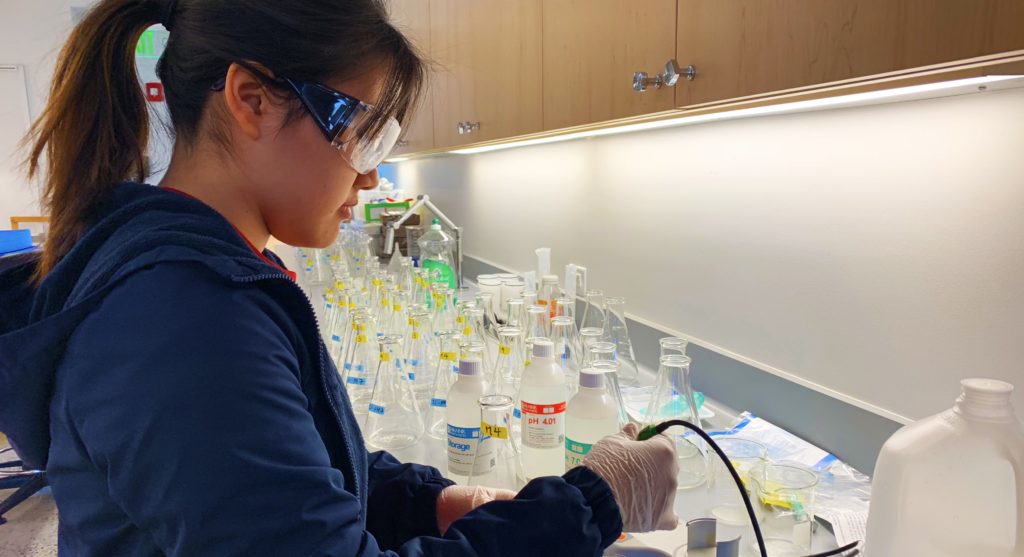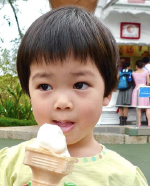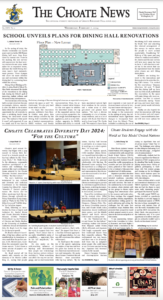Compared to the Science Research Program (SRP) or Capstone presentations, the final presentations for the Environmental Immersion Program (EIP) are often overlooked. However, the ongoing projects at the Kohler Environmental Center (KEC) combine an equal amount of dedicated scientific research, individual study, and faculty mentoring.
“The final presentation consists of writing your own research paper that encapsulates all the work that you had done during the year,” said Jonathan Gonzalez ’20, a current KEC student. “I will also have to create a poster that summarizes all of my work in order to present it to my KEC cohort and faculty.”
For his project, Gonzalez is examining the environment through the lens of early education. “My project looks to measure the effectiveness of environmental education on children’s environmental orientations,” he said. “I will be working with the Kinderwoods program, an environmental education program for kindergarteners at Moses Y. Beach Elementary School, by surveying and interviewing the students, teachers, and parents involved.”
Gonzalez stressed the importance — and challenge — of choosing a meaningful topic. “Environmental education is something that is very important to me,” he said. “I believe that being encouraged to spend time out in the natural environment provides this new generation of students the opportunity to develop a connection with the environment. With environmental issues such as climate change becoming such a prevalent issue in today’s world, we need to help guide the next generation’s leaders to appreciate and respect the environment.”
Gonzalez also noted that the research project is subject to change. He said, “For the environmental project, I initially wanted to focus on environmental programs found in Brooklyn, New York, where I’m from. However, I realized how difficult that would be to travel back and forth from different states, so I decided to look at nearby environmental programs. Looking back, I am very happy that I chose the latter.”
Lizzie Quinn ’20, another KEC student, chose to focus on a singular plant and the effects of an experimental variable upon it. “My project looks into the influence of precipitation-based pulses of nitrogen deposition on the ectomycorrhizal colonization of Pinus strobus, or the Eastern white pine,” Quinn said.
She added that she’s “hoping to see if, when an influx of nitrogen enters into the root system of Eastern white pine, it plays a major role in ectomycorrhizal colonization in terms of phenotypic long- and short-root classification of ectomycorrhizas.”
She continued, “These precipitation-based pulses of nitrogen mimic the increased amounts of nitrogen deposits, sourced anthropogenically from fertilizer runoff and acid rain, that arrive in forested ecosystems towards the beginning of the spring season, which presents with snowmelt and rain in a larger quantity compared to the other three seasons.”
In her research, Quinn is working with 123 pine trees, 15 of which she obtained in mature seedling forms and the other 108 she germinated from seed. She began her nitrogen applications this term and has been growing the pines since early in the winter term.
Of course, none of the KEC students could tackle these complex and lengthy projects alone. Mr. Joe Scanio and Ms. Lena Nicolai are the faculty advisers at the KEC. “Faculty in the EIP facilitate research, but it is largely student driven,” said Mr. Scanio. “We spend the first trimester on generating research questions and research design. After that, faculty support students by encouraging them to explore an aspect of their research more thoroughly, asking questions that may lead them to discover flaws in their research design, and talking with them in depth about their subject.” The advisers provide general structure and checkpoints for students’ work throughout the year. Students can also communicate with professors and researchers in a variety of outside institutions.
Quinn stressed the helpfulness of faculty. “I remember when 83 of my pine seedlings died over winter break, Mr. [Joe] Scanio was quick to reorder some back-up seedlings, and my classmates mourned the tragedy along with me. [Ms.] Lena [Nicolai] is also fantastic when it comes to aid with my experiment. Over spring break, she made sure to water my pine babies their recommended amounts, and when I came back to campus in mid-March, the KEC greenhouse was filled with the bright green foliage of my thriving pines — all 123 of them.”
Quinn recognizes the valuable opportunities that the KEC final project has given her. “The entire process of choosing a singular topic to focus on was daunting, to say the least, especially when I arrived at the KEC with no idea about what I wanted my project to cover,” she said. “However, the project I’ve undertaken has been nothing like I’ve ever done in my high school career.”




